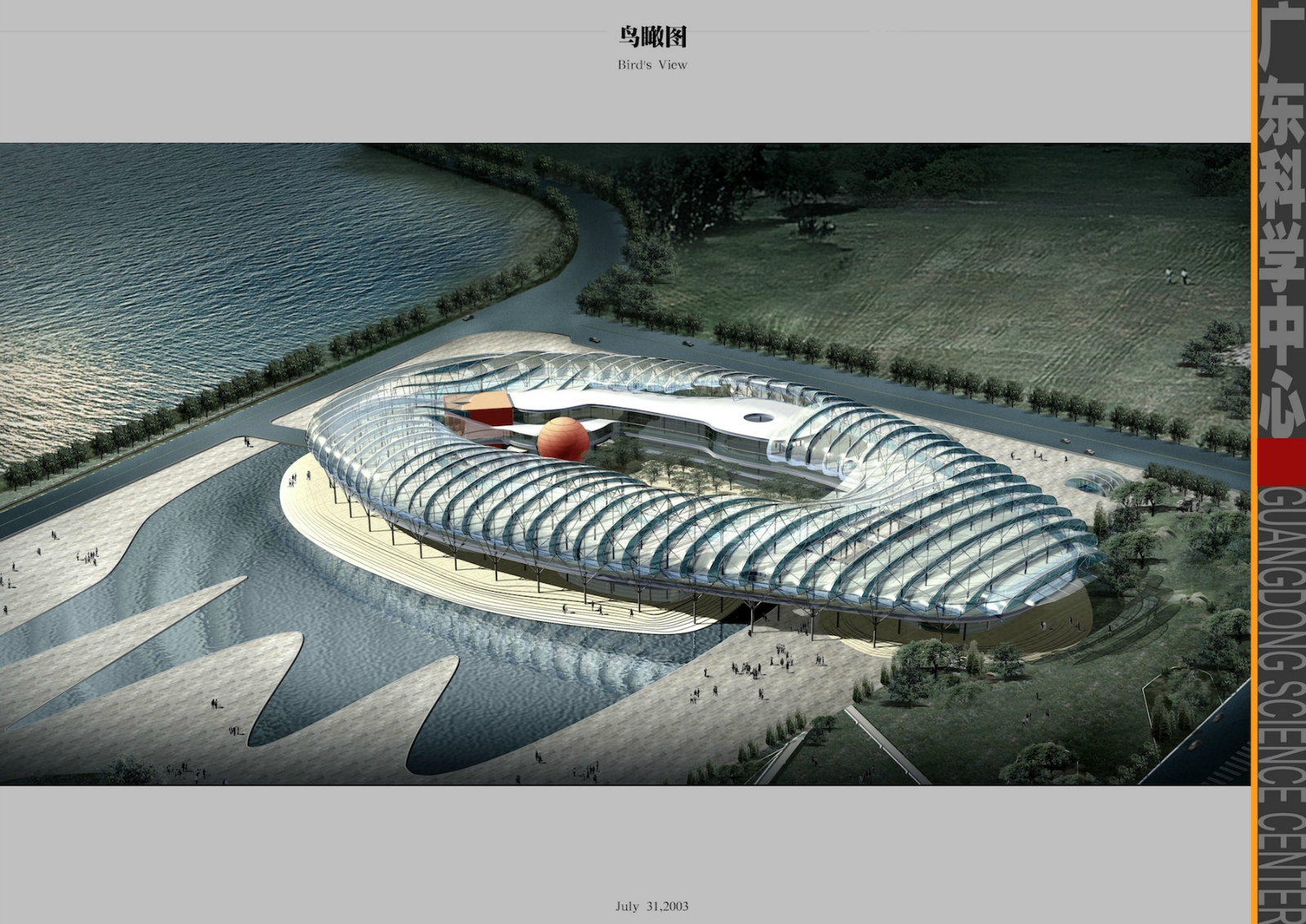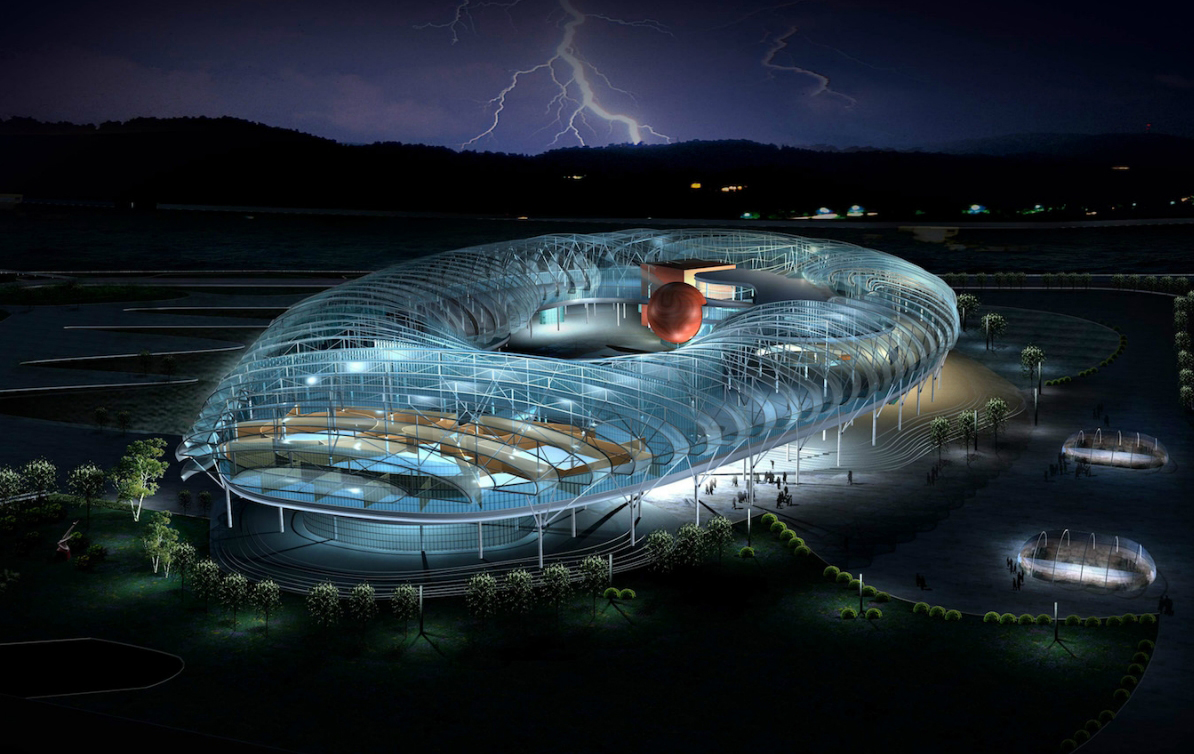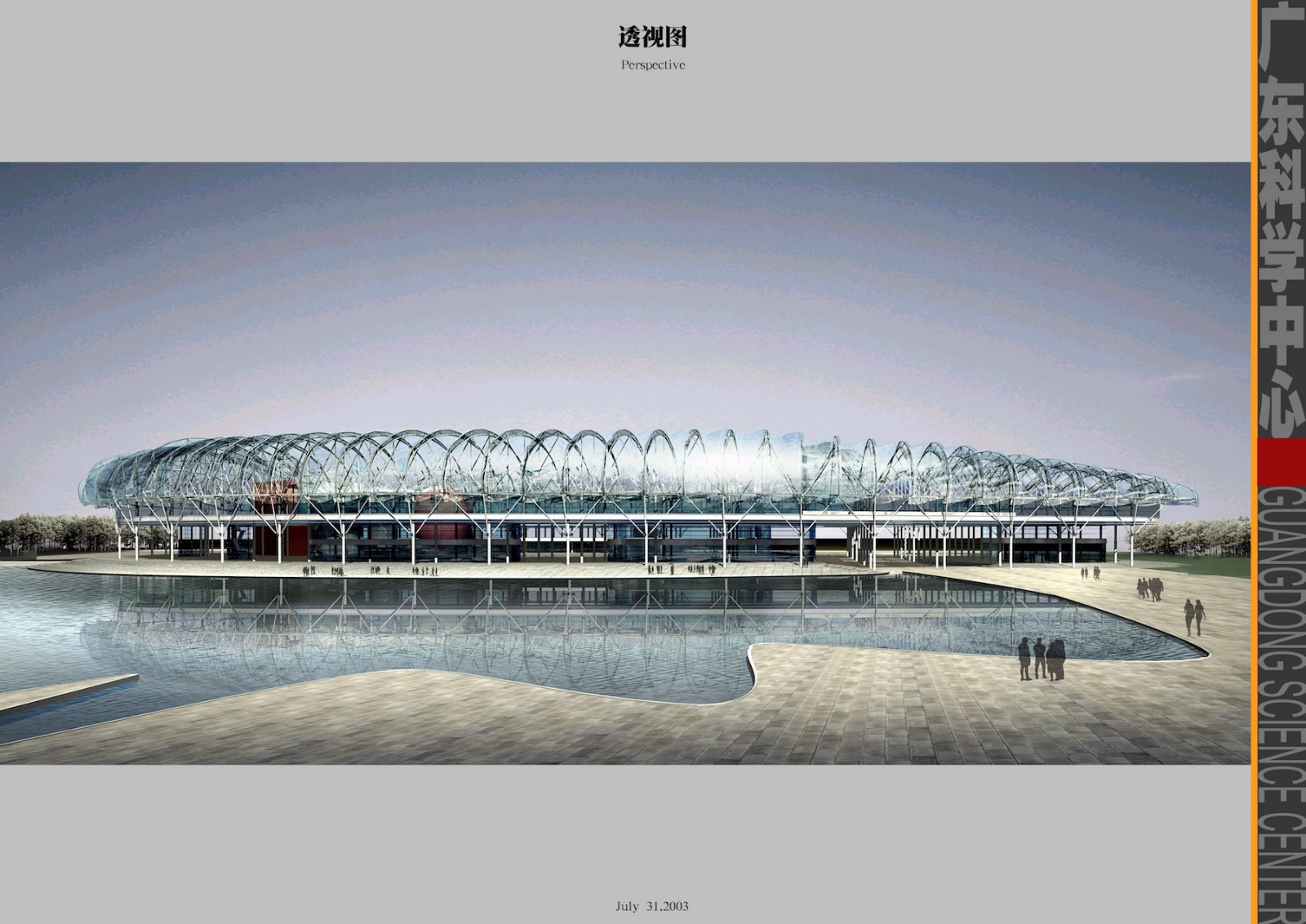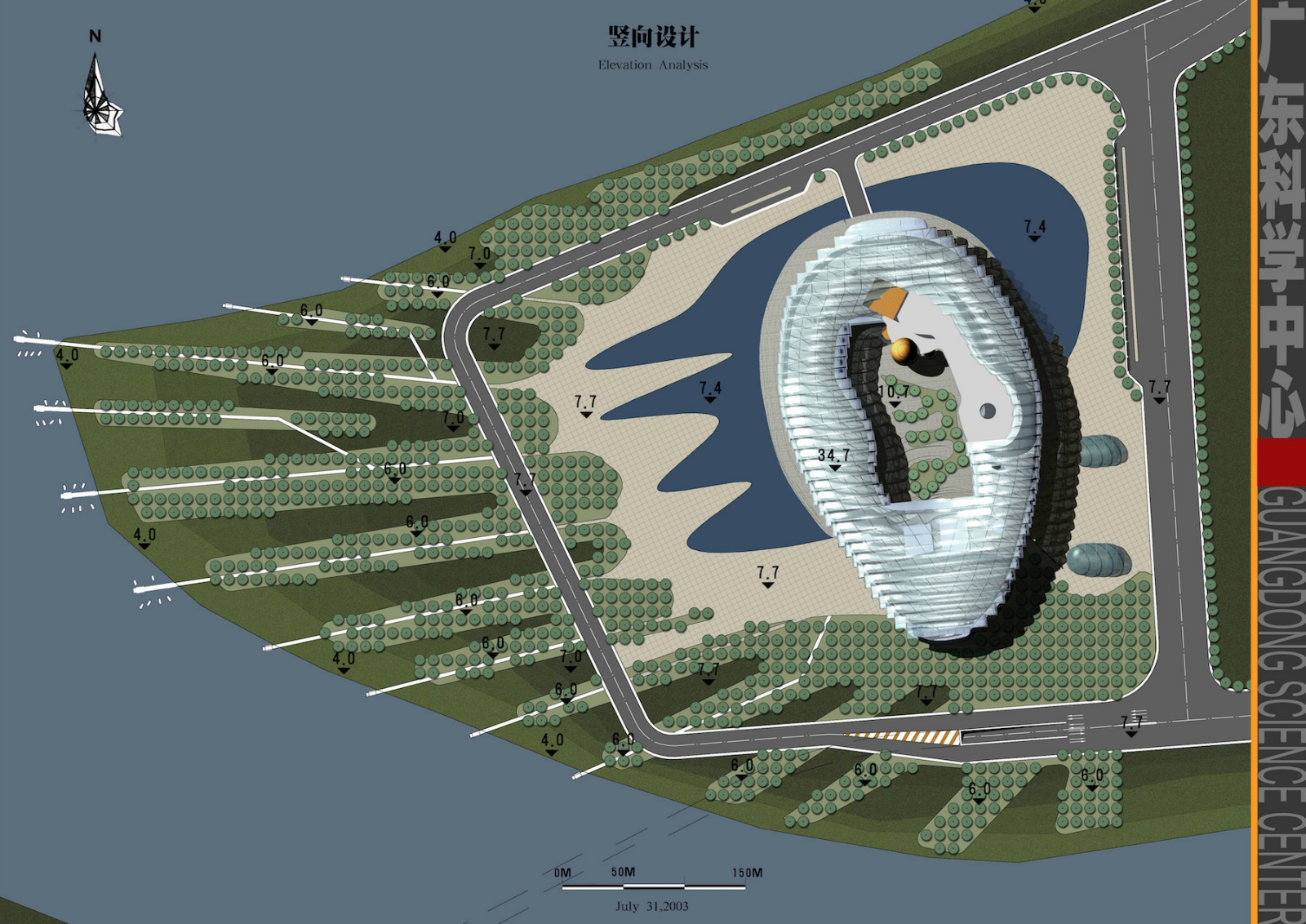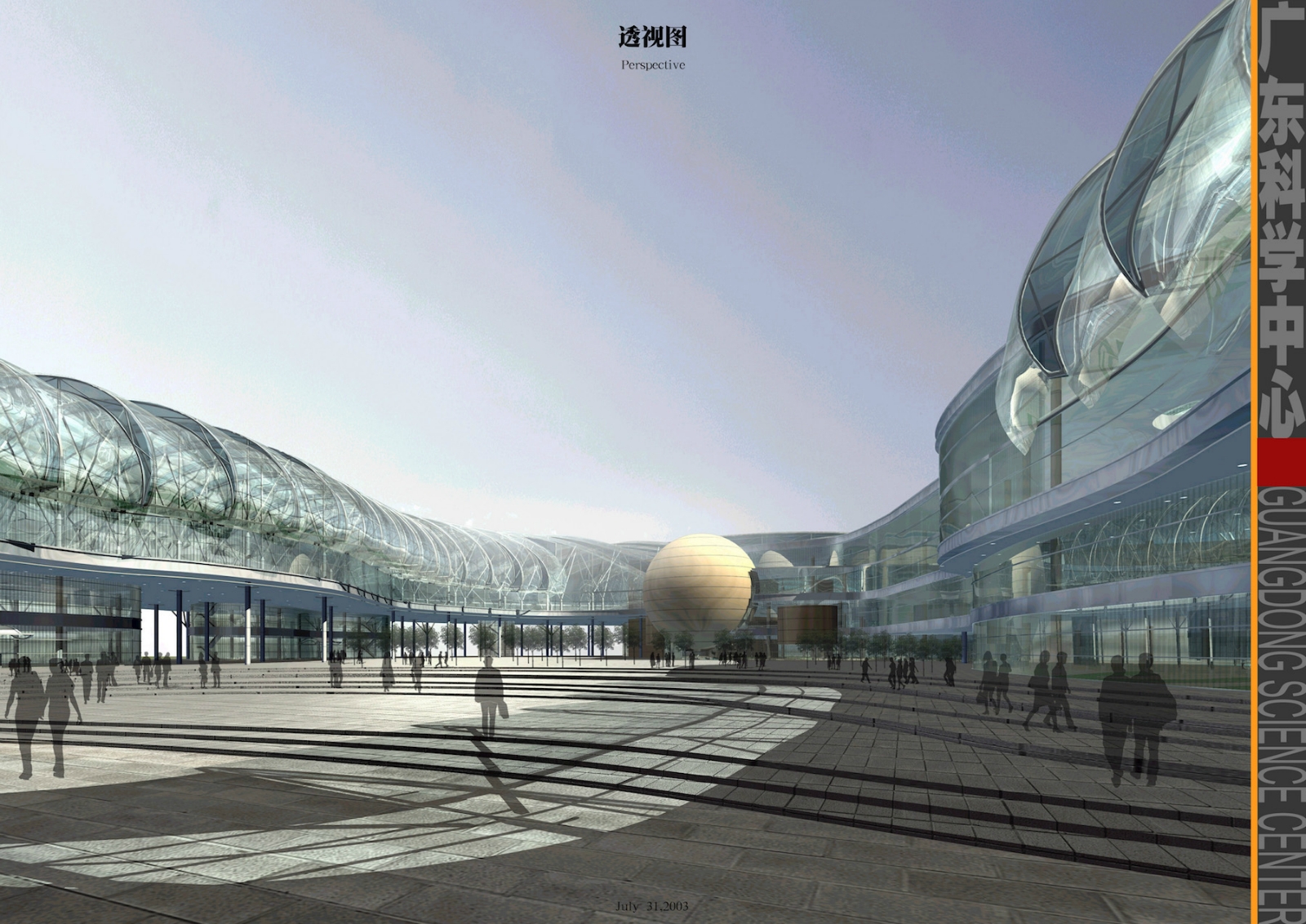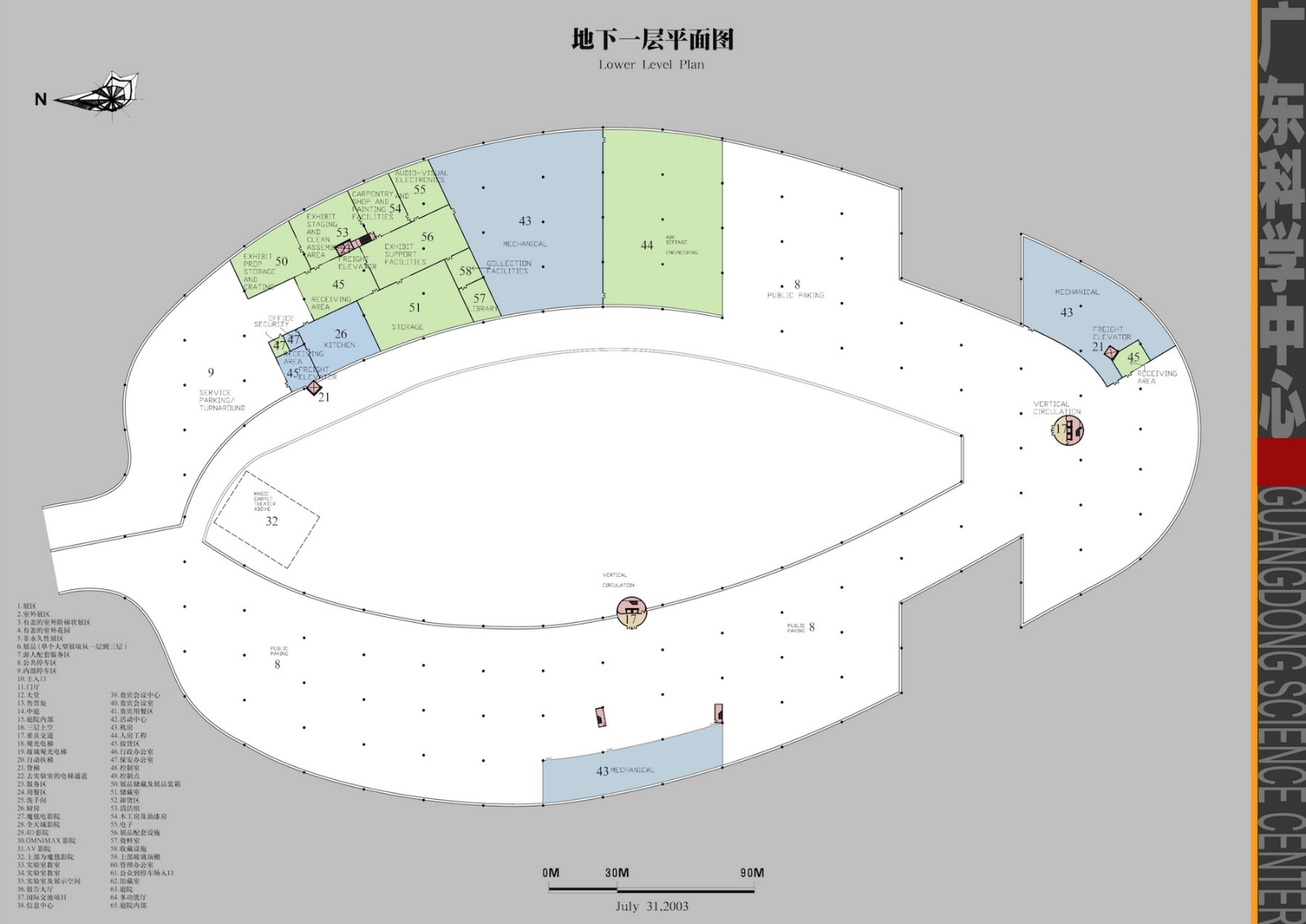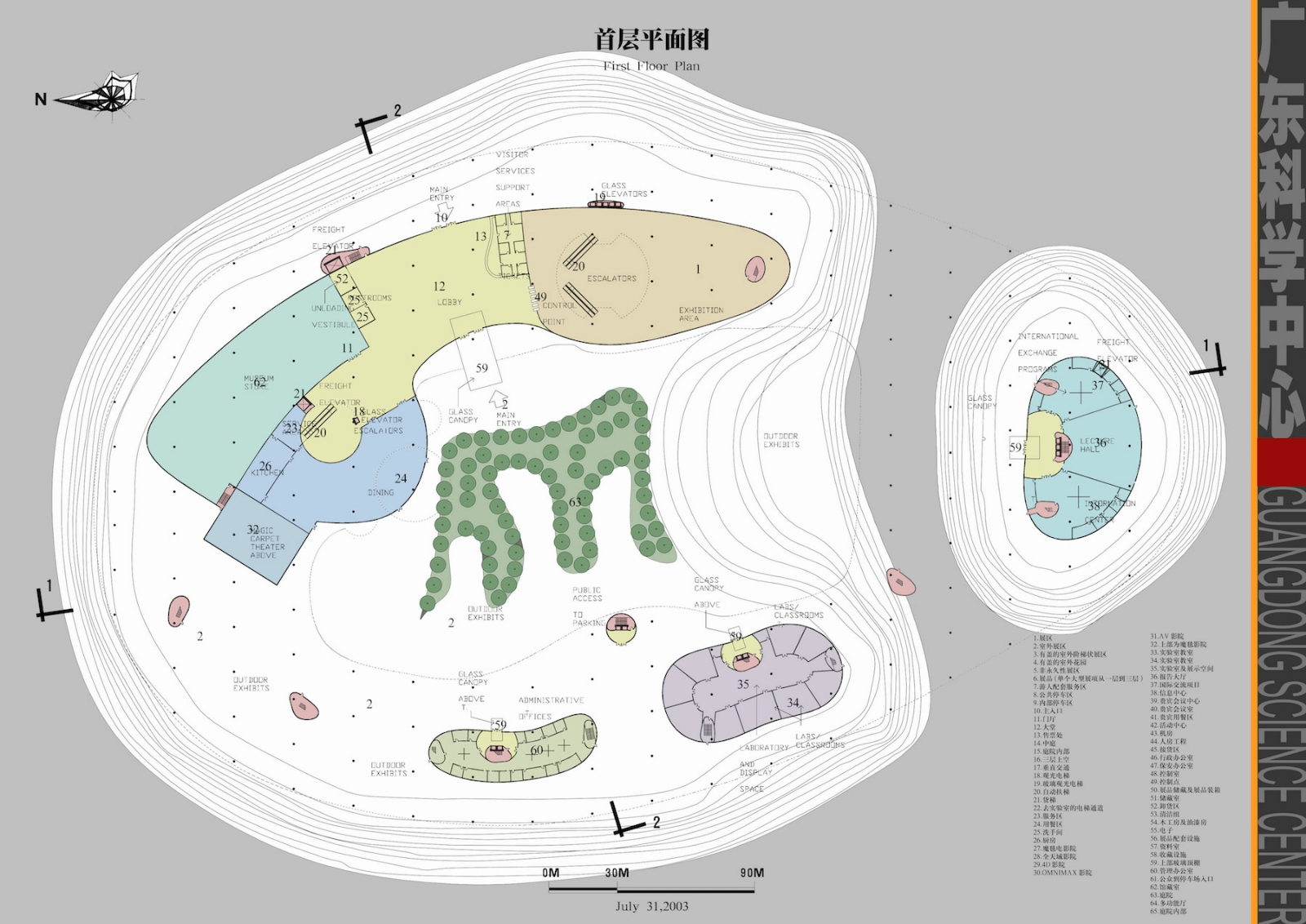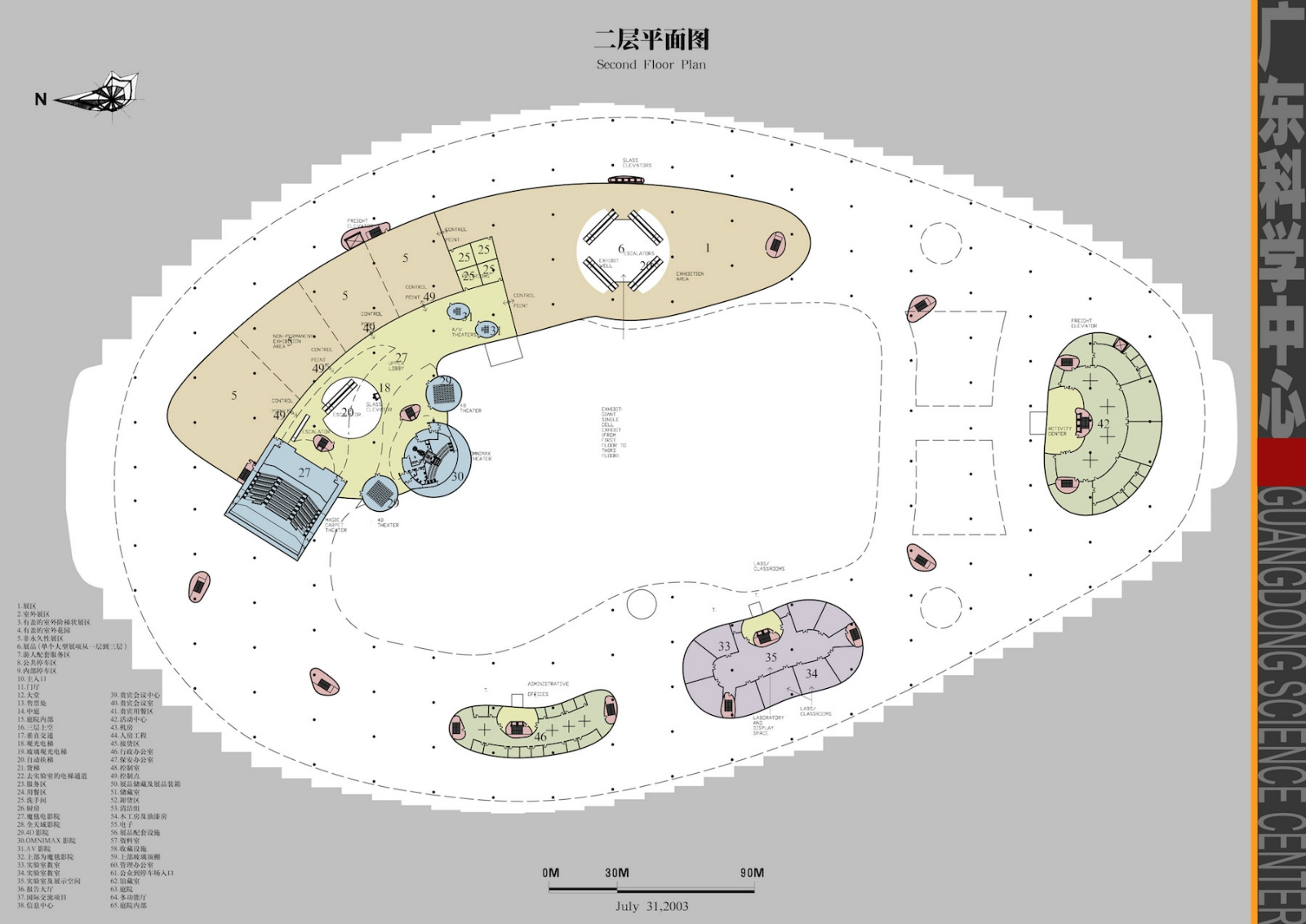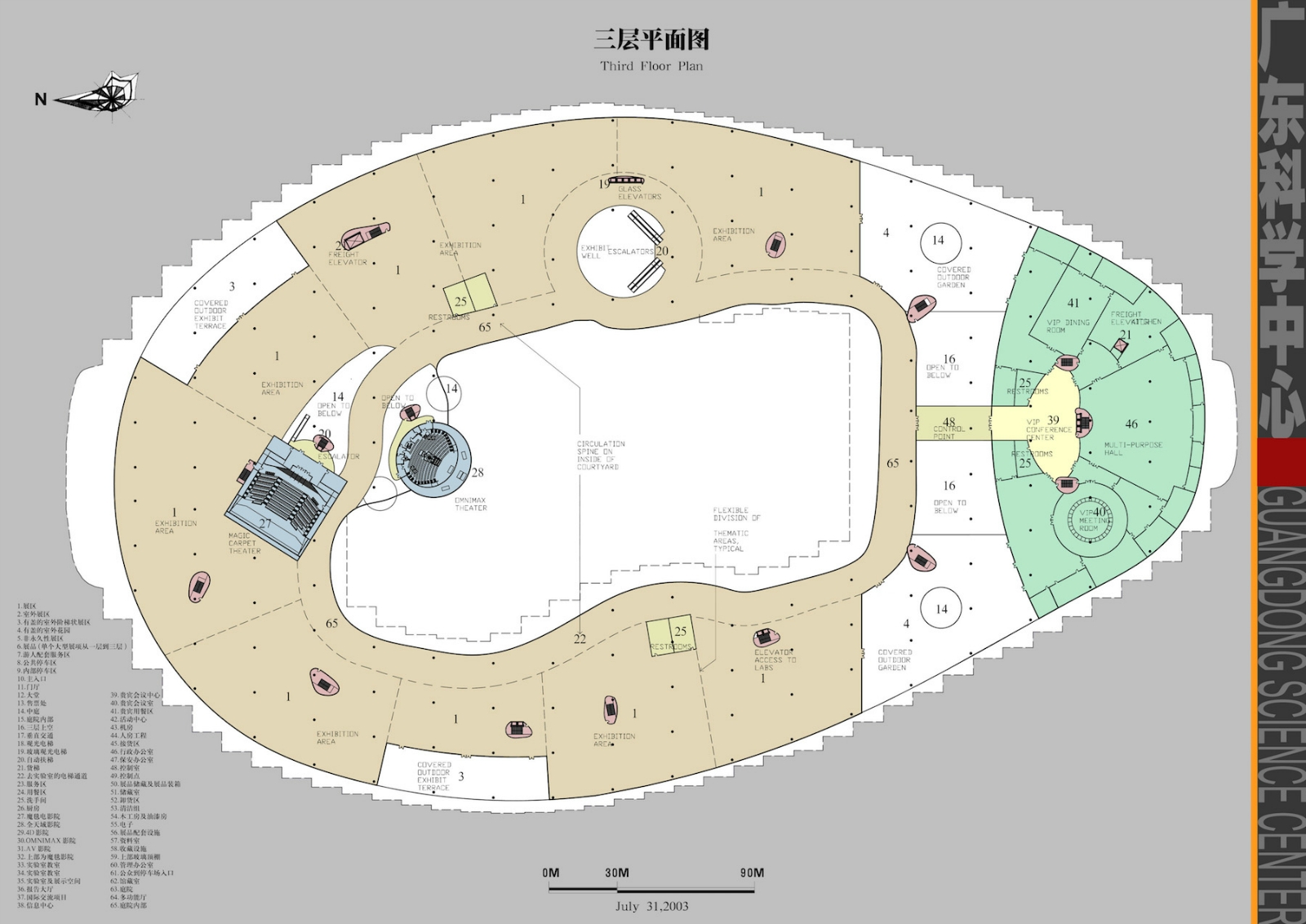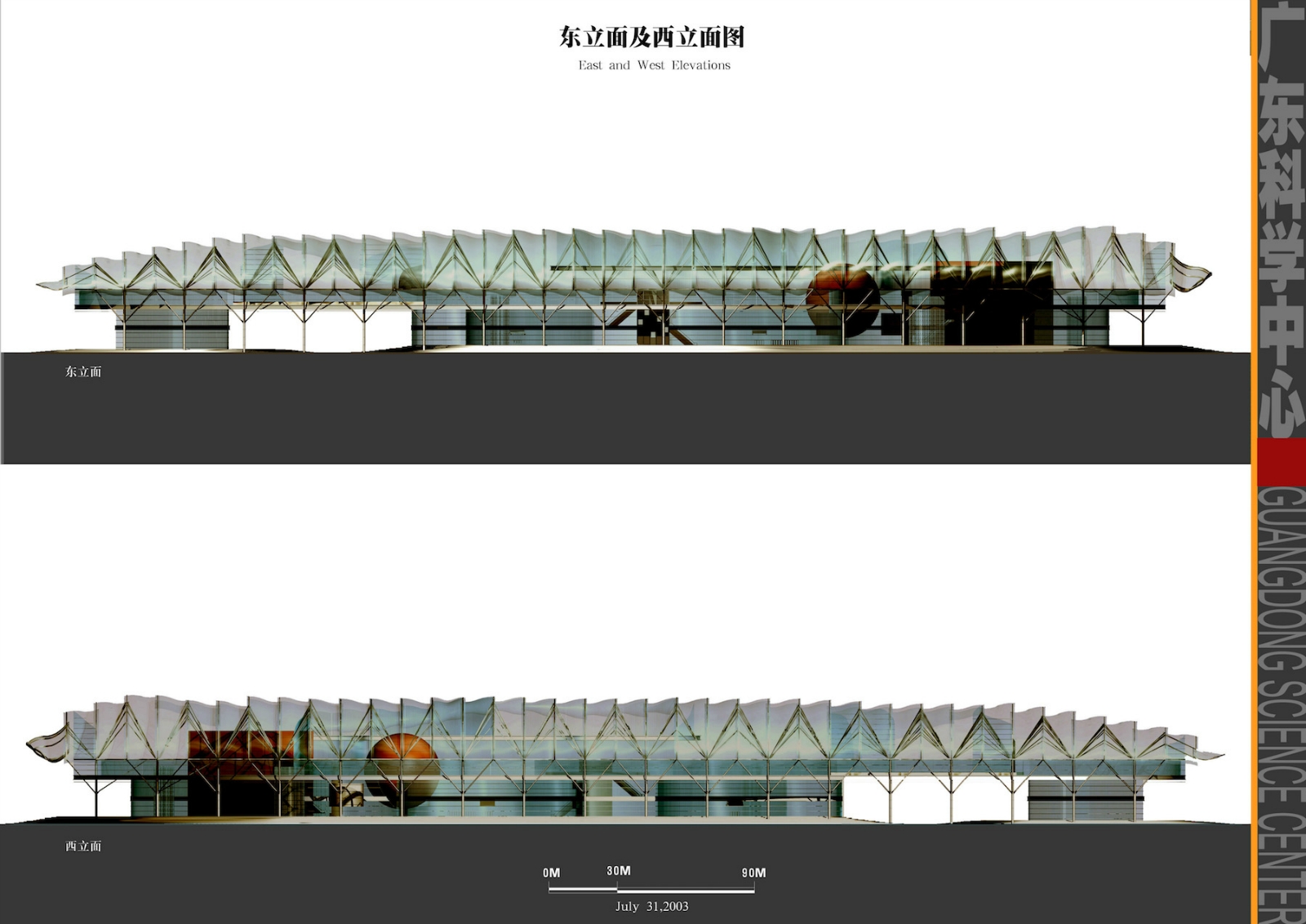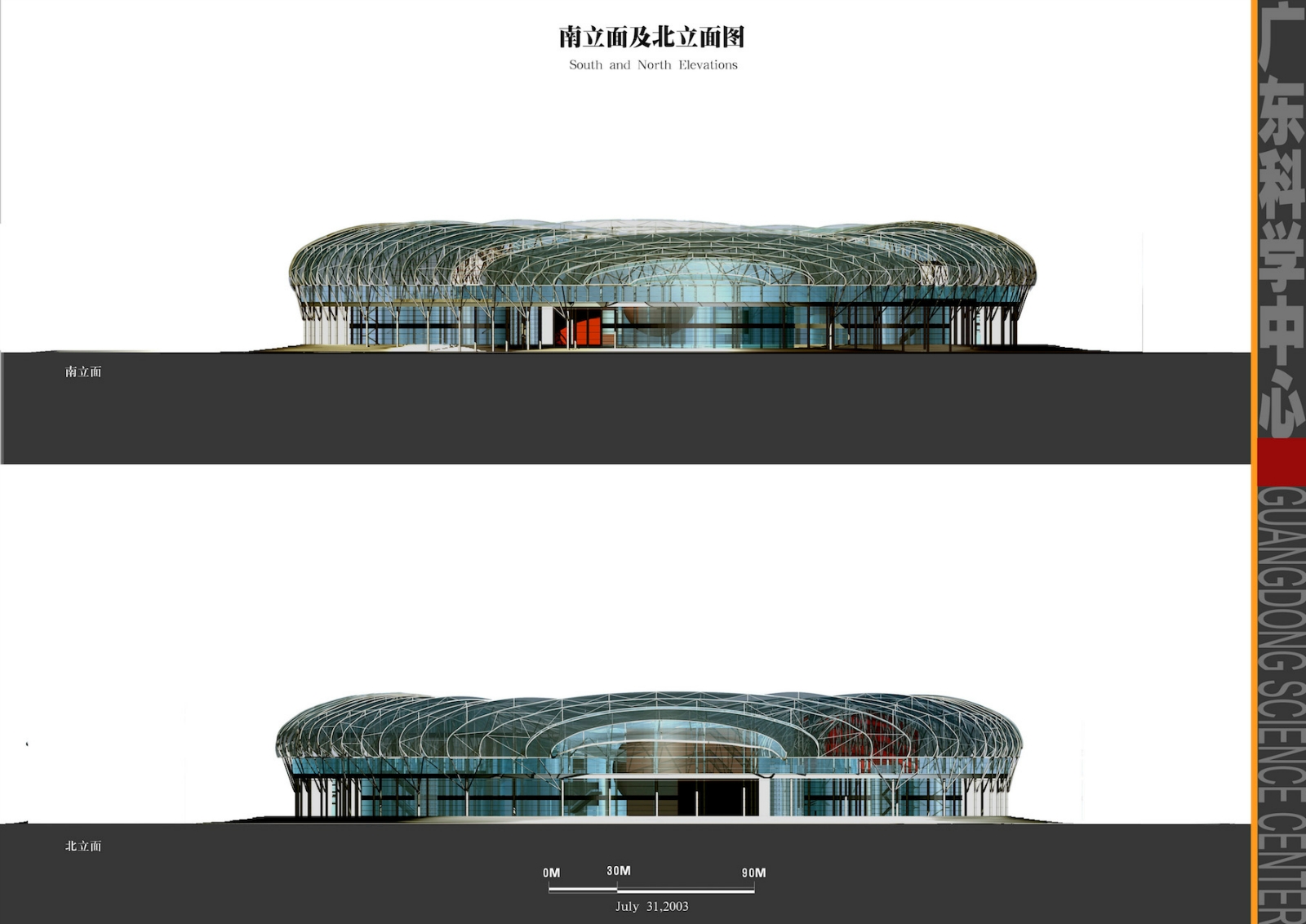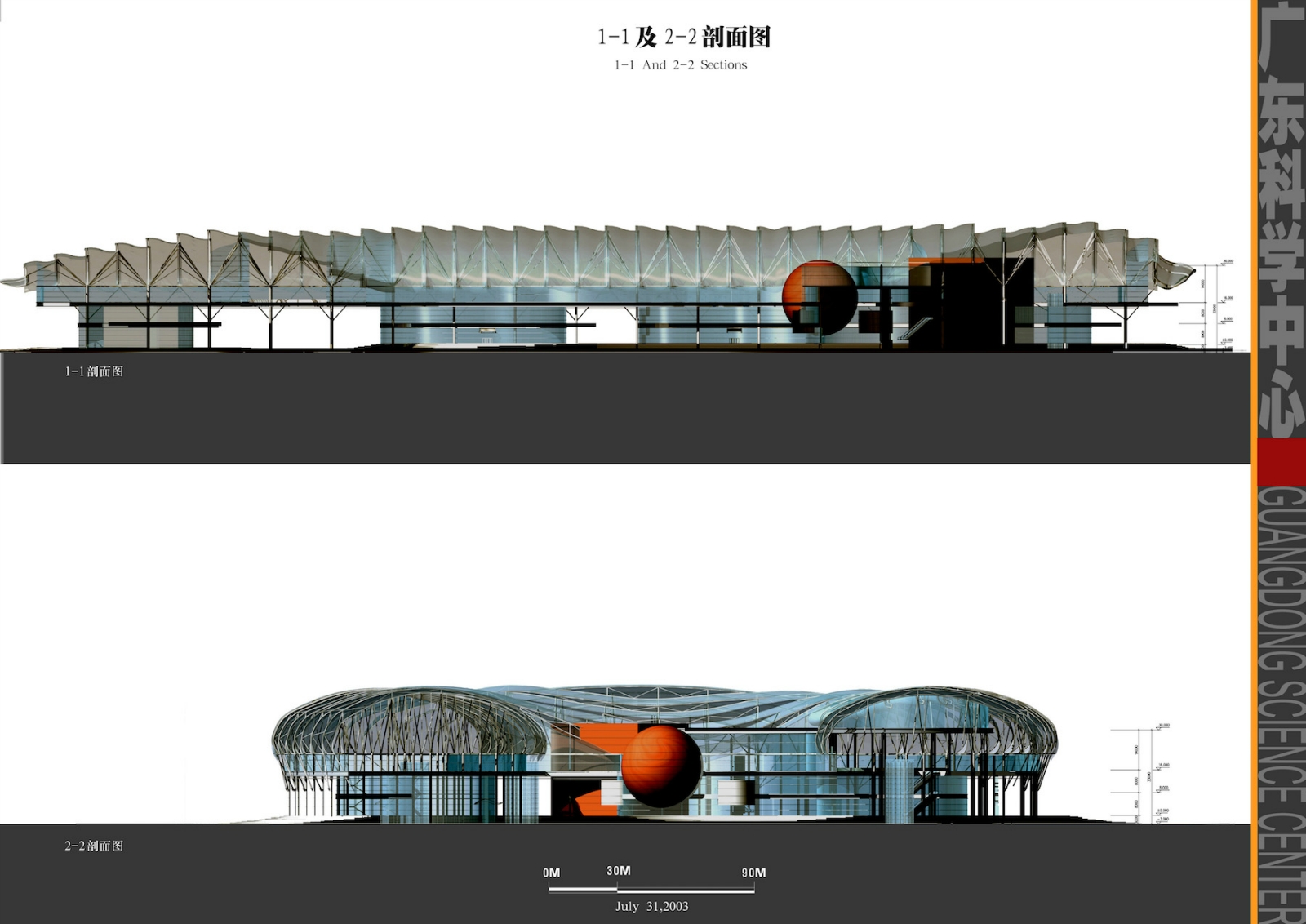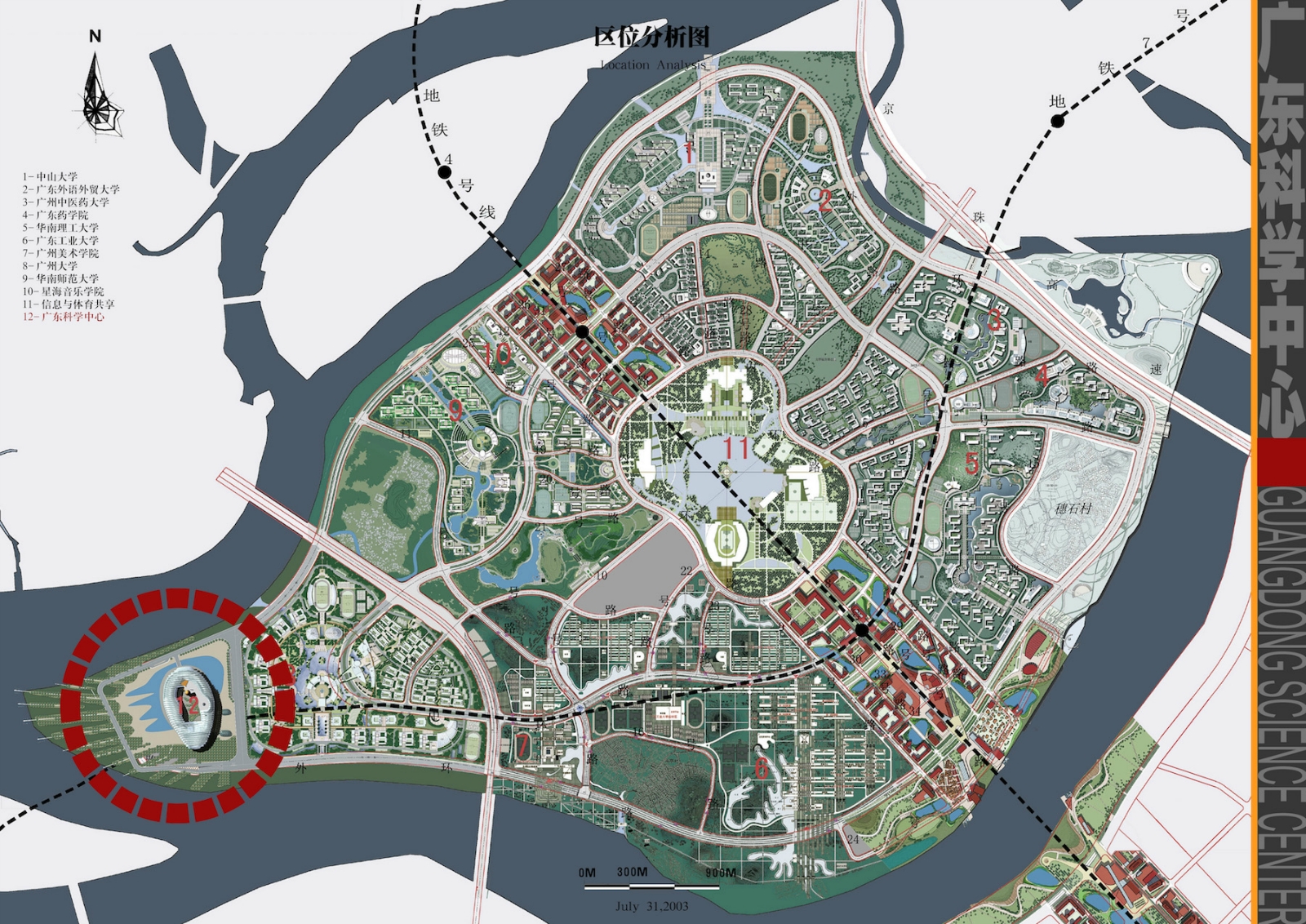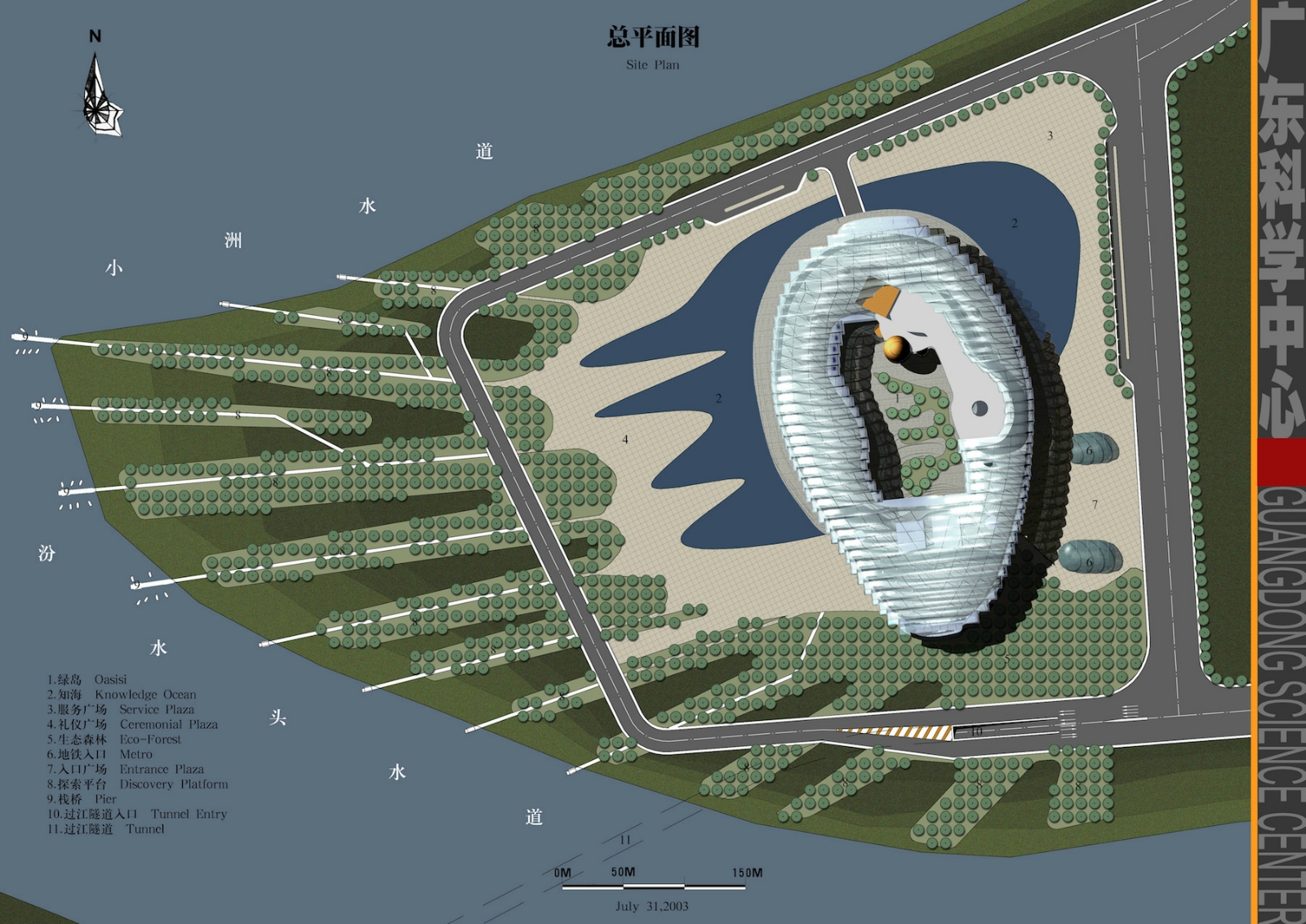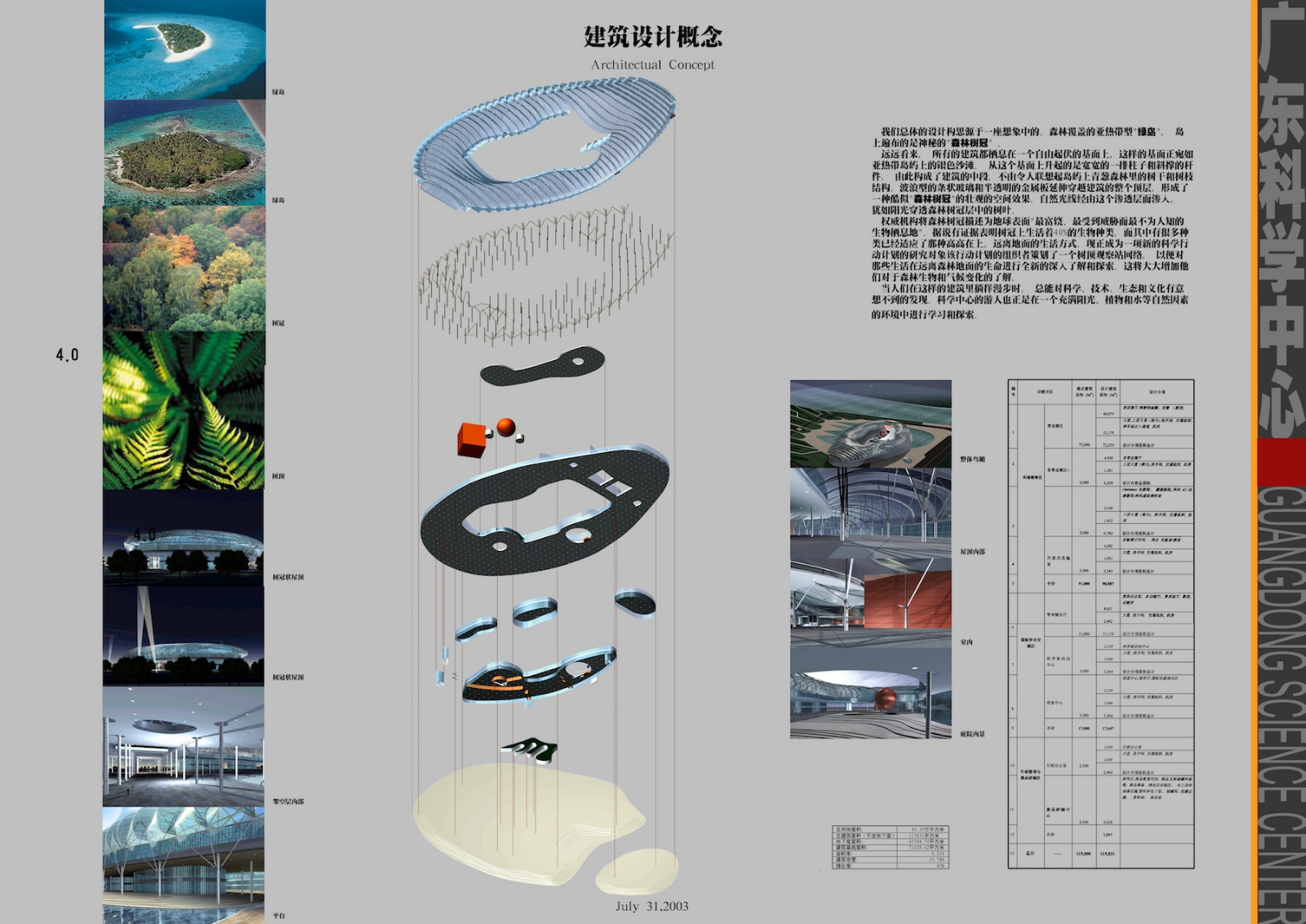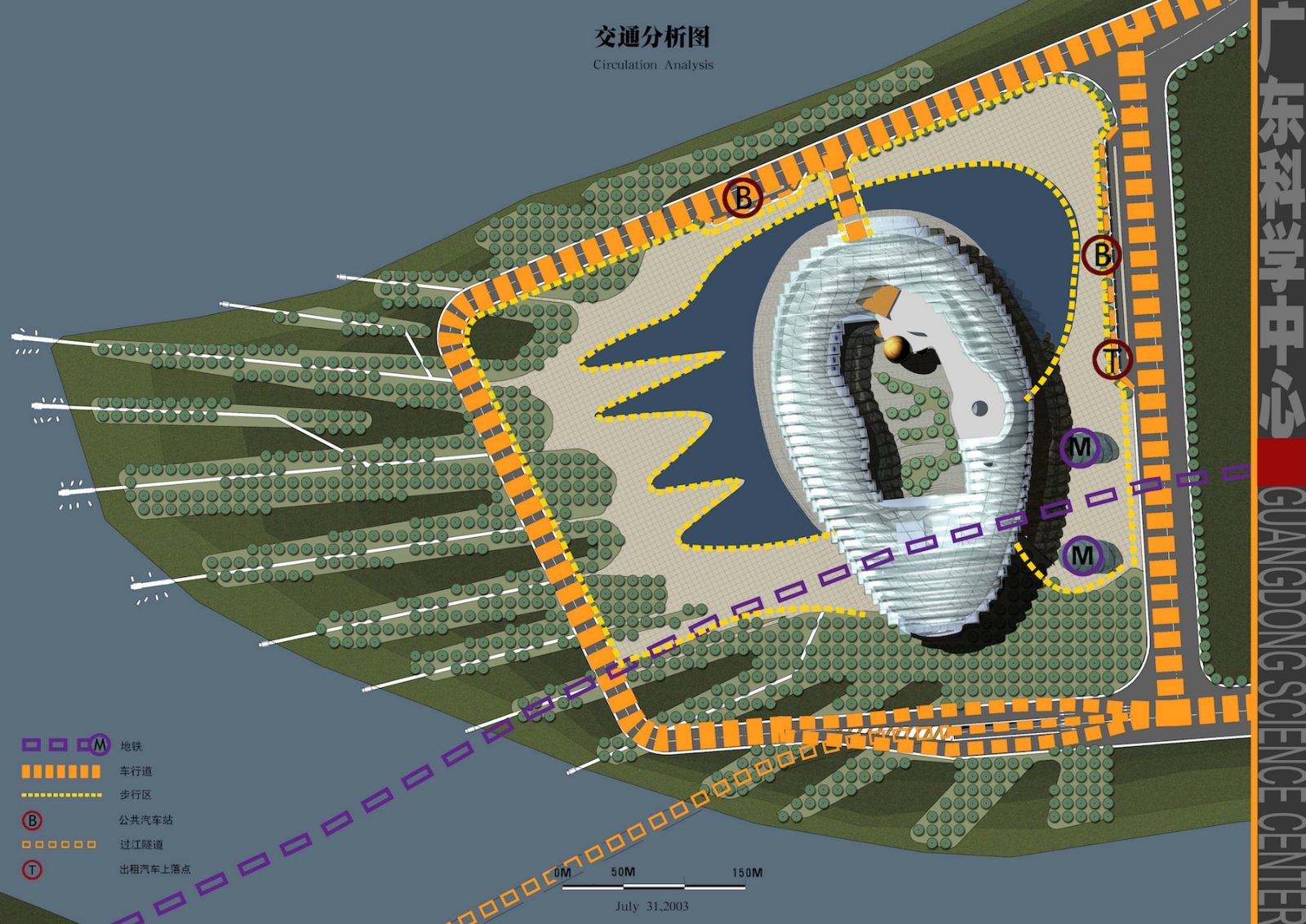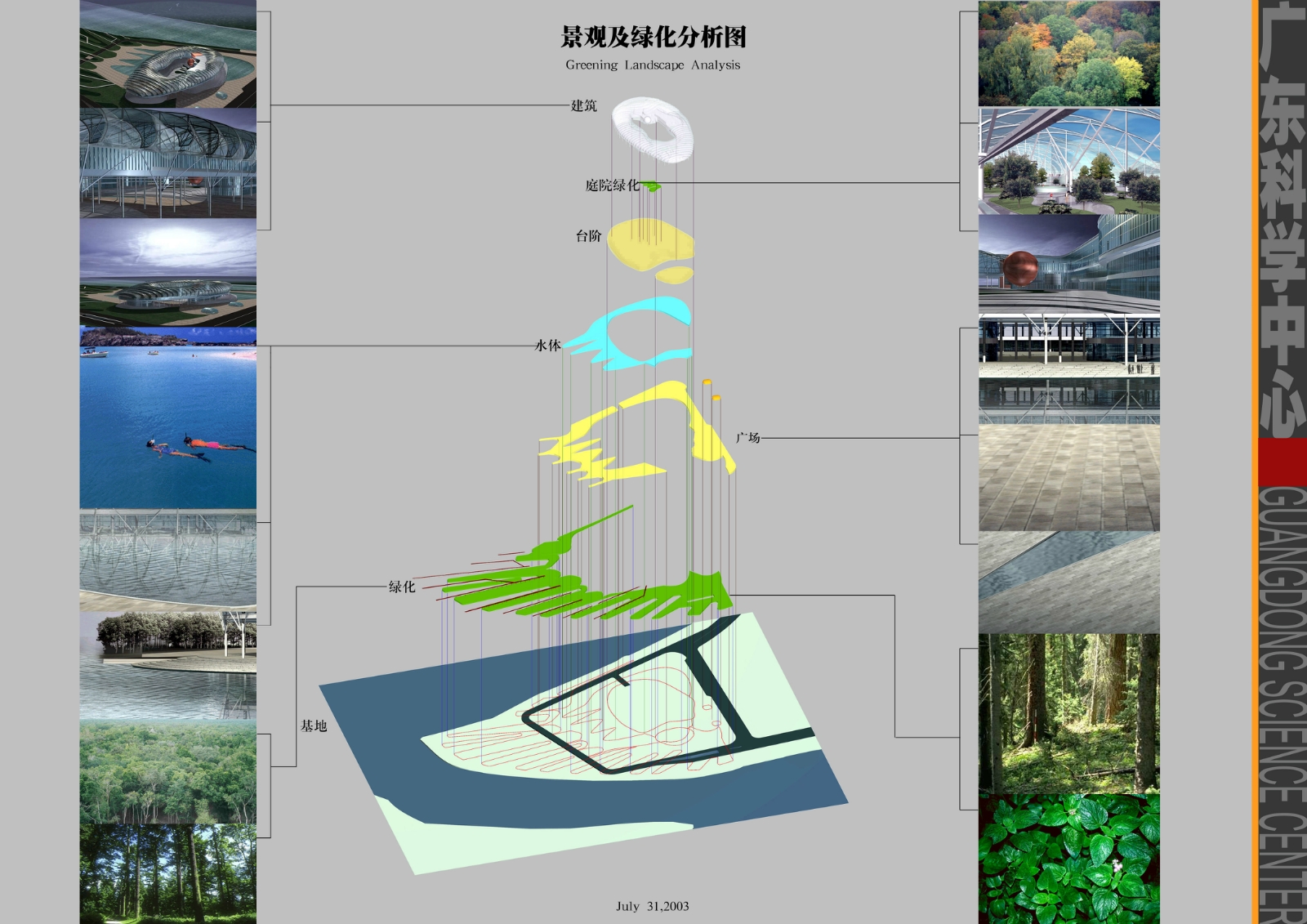Guangdong Science Center
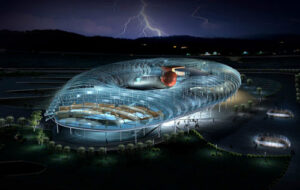
Location: Guangzhou, China
Role: Conceptual Designer for Invited International Competition; Collaborated with SBA, Boston/China-based architects
Program: Interactive science exhibits, theaters, lobby, cafe, gift shop, function spaces, G-8 summit facilities, classrooms, exhibit support, and offices
Building Area: 1,238,000 sf
Status: Finalist competition entry (top pick of jury), however project was redesigned and implemented by China-based architects and opened to the public in 2008
Description:
This conceptual design, for what would become the world’s largest science center, is inspired from an imaginary tree-covered “island of discovery” that is filled with unexpected treasures. As on meanders through this vast multi-level facility, one would encounter unexpected discoveries about science, technology, ecology and Chinese culture.
As seen from a distance, the building rests on an undulating free-formed base that looks like the white sand beaches of the tropical island. A wide array of columns and diagonal braces rising up from this base forms the middle section of the building and is reminiscent of the tree trunks and branch structure of a lush forest on the island. Undulating strips of glass and semi-transparent metal panels stretch across the entire top level of the building, forming a spectacular spatial effect that is similar to a broad “tree-top canopy.” Diffuse natural light filters down through the vast multi-level facility, one encounters unexpected discoveries about science, technology, ecology and culture. Just as science forms most of its discoveries from the study of conceptualizing of the natural environment, the visitors of the Science Center will learn and discover an environment filled with natural elements such as sunlight, plants and water features. These discoveries will take place in a building unlike any other science center in the world, whose design expresses a special tropical “island” environment that is appropriate to its location and functions.
Visitors arriving to the site by subway approach the building from two glass Metro access pavilions in the southeast portion of the grand plaza that surrounds the Science Center. Busses and taxis drop off visitors along the street at the east edge of the plaza. The landscaping and building massing naturally draws visitors towards the sloping paths that lead to the public entrances. A “clearing” in the center of the “island” forms an oval-shaped raised outdoor courtyard that is the central focus and orientation space for the Science Center.
Visitors arriving to the site by automobile parking under this courtyard level and are transported via elevators or escalators directly to the courtyard level. All of public components of the facility are entered directly off the central courtyard. The majority of the building mass is located on upper levels, to create a maximum amount of covered and open outdoor Public Park space flowing under and through the building. This public park space would always be open and available to university students, families and school groups free of charge. There would be a large-scaled outdoor “science playground exhibits”, as well as outdoor dining areas, garden areas, and walking paths. The public park space extends to the west, across the road to the Eco-park. A series of landscape “fingers” stretch out to the river’s edges like the tentacles of a giant jellyfish. A series of simple walkways and piers would provide a place to jog and stroll, as well as learn about ecological principle through a series of outdoor exhibits.

